
Journal of Usability Studies
metrics 2024
Fostering deep understanding of user-system interactions.
Introduction
The Journal of Usability Studies, published by the USERS EXPERIENCE PROFESSIONAL ASSOCIATION, is a pivotal platform for researchers and professionals dedicated to advancing the field of usability and user experience design. With an ISSN of 1931-3357, this journal offers a collection of peer-reviewed articles that explore innovative methodologies, emerging technologies, and applied research in usability studies. Though it operates under a traditional access model, the journal remains dedicated to fostering a detailed understanding of how users interact with systems and products. The Journal of Usability Studies is instrumental for those aiming to enhance user satisfaction through research-backed insights, making it a vital resource for academics, practitioners, and students seeking to contribute to the evolving discourse in human-computer interaction and usability engineering.
Metrics 2024
 -
- 1.00
1.00 2.20
2.20 -
-Metrics History
Rank 2024
IF (Web Of Science)
JCI (Web Of Science)
Quartile History
Similar Journals
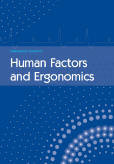
International Journal of Human Factors and Ergonomics
Innovating Human-Centric Solutions for Complex SystemsWelcome to the International Journal of Human Factors and Ergonomics, a premier platform dedicated to the exploration and advancement of research in the increasingly vital fields of human factors and ergonomics. Published by INDERSCIENCE ENTERPRISES LTD, this journal serves an international audience of researchers, practitioners, and students, facilitating the dissemination of knowledge that aims to enhance the interaction between people and systems. With its ISSN 2045-7804 and E-ISSN 2045-7812, the journal actively contributes to the academic community's understanding of human capabilities and limitations, striving to improve product design, work environments, and overall usability. Despite its classification in Q4 of the 2023 Human Factors and Ergonomics category and a Scopus ranking reflecting the competitive landscape—where it stands at #37 out of 46 in its field—the journal is committed to building a strong foundation of evidence-based practices through rigorous peer-reviewed articles. Through its convergence efforts from 2016 to 2024, it aims to bridge theoretical research with practical applications to promote safety, efficiency, and user satisfaction across various domains.
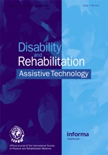
Disability and Rehabilitation-Assistive Technology
Enhancing Quality of Life Through Collaborative ResearchDisability and Rehabilitation-Assistive Technology, published by Taylor & Francis Inc, is a leading journal dedicated to advancing research in the field of assistive technology, disability, and rehabilitation. With an ISSN of 1748-3107 and an E-ISSN of 1748-3115, this journal serves as a vital resource for researchers, clinicians, and professionals, providing high-quality, peer-reviewed articles that explore the latest innovations and methodologies in assistive technologies aimed at improving the quality of life for individuals with disabilities. The journal is recognized for its significant impact across multiple disciplines, achieving prestigious Q1 rankings in Rehabilitation and Speech and Hearing, and maintaining a solid position in Q2 across other relevant categories such as Biomedical Engineering and Orthopedics. As a collaborative platform for sharing knowledge and research findings, Disability and Rehabilitation-Assistive Technology plays a critical role in bridging the gap between technical advancements and practical applications in rehabilitation. Researchers and practitioners are encouraged to contribute and engage with the journal to enhance the collective understanding and efficacy of assistive technologies.

Universal Access in the Information Society
Transforming research into actionable insights for all.Universal Access in the Information Society is a distinguished academic journal published by SPRINGER HEIDELBERG, focusing on the critical fields of computer networks, human-computer interaction, information systems, and software. Established in 2003, this periodical aims to disseminate innovative research that tackles the challenges of universal access to information and communication technologies, making it a vital resource for researchers, professionals, and students dedicated to enhancing digital inclusivity. With a commendable impact reflected in its Scopus rankings, it places in the second quartile for Computer Networks and Communications and Information Systems, as well as in the third quartile for Human-Computer Interaction, verifying its pivotal role in advancing knowledge within these domains. Although currently not open access, the journal offers comprehensive insights that are essential for anyone looking to contribute to or comprehend the evolving landscape of information societal access. The journal's commitment to bridging knowledge gaps makes it indispensable for both academic and practical applications in the Information Society.
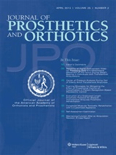
JOURNAL OF PROSTHETICS AND ORTHOTICS
Innovating Solutions for Enhanced Patient OutcomesJournal of Prosthetics and Orthotics is a prestigious peer-reviewed journal published by Lippincott Williams & Wilkins, dedicated to advancing the field of prosthetics and orthotics through high-quality research and innovative practices. With an ISSN of 1040-8800 and an E-ISSN of 1534-6331, this journal serves as a key resource for professionals, researchers, and students involved in biomedical engineering, orthopedics, and rehabilitation. With impactful contributions since its inception in 1982, the journal holds a significant reputation and ranks in the Q3 quartile across various categories, including Biomedical Engineering, Orthopedics and Sports Medicine, and Rehabilitation. It is committed to disseminating advancements in clinical practices, technological innovations, and educational methodologies. Although it operates under a subscription model, its wide-reaching influence makes it an essential reading for those dedicated to improving patient outcomes in prosthetics and orthotics.

SOFTWARE QUALITY JOURNAL
Fostering innovation in software development.SOFTWARE QUALITY JOURNAL, published by Springer, is a preeminent platform dedicated to advancing the field of software engineering and quality assurance. With an ISSN of 0963-9314 and an E-ISSN of 1573-1367, this journal serves as a vital resource for academics and practitioners alike, bridging the gap between theoretical frameworks and practical applications. The journal is recognized for its impactful contributions, holding a remarkable Q1 ranking in Media Technology and demonstrating strong performance with Q2 placements in Safety, Risk, Reliability and Quality, as well as Software, solidifying its reputation in the academic community. As of 2023, the journal is ranked 64th in Safety, Risk, Reliability and Quality and 176th in Computer Science Software on Scopus, showcasing its relevance and influence. Covering a broad range of topics from software quality metrics to risk management strategies, SOFTWARE QUALITY JOURNAL aims to foster innovation and best practices in software development. Join a community of leading researchers and professionals committed to enhancing the quality and reliability of software systems.

USER MODELING AND USER-ADAPTED INTERACTION
Pioneering Techniques for Personalized User ExperiencesUSER MODELING AND USER-ADAPTED INTERACTION, published by SPRINGER, stands as a pivotal journal within the realms of Computer Science Applications, Education, and Human-Computer Interaction. With an ISSN of 0924-1868 and an E-ISSN of 1573-1391, this journal has established a reputable presence since its inception in 1991, continuing to contribute to the scholarly discourse through 2024. With an impressive impact factor reflective of its high visibility, it is ranked in the top quartiles, notably Q1 in both Computer Science Applications and Education, and Q2 in Human-Computer Interaction as of 2023. This positions the journal within the 95th percentile in Social Sciences Education and the 81st percentile in Human-Computer Interaction. As it encompasses a broad scope that integrates user modeling techniques with adaptive interaction strategies, the journal caters to the needs of researchers, professionals, and students keen on advancing knowledge in adaptive technology, educational tools, and user-centric design. While not currently open access, it remains a valuable resource for anyone interested in the intersection of user experience and technological adaptation.
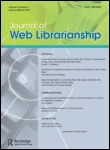
Journal of Web Librarianship
Elevating Library Services with Cutting-Edge ResearchWelcome to the Journal of Web Librarianship, an esteemed publication dedicated to the evolving landscape of library science and information technology. Published by Routledge Journals, Taylor & Francis Ltd, this journal serves as a vital platform for researchers and professionals to share innovative practices, methodologies, and research findings in the fields of Library and Information Sciences and Computer Science Applications. With an impressive impact factor reflected in its 2023 rankings—Q1 in Library and Information Sciences and Q2 in Computer Science Applications—the journal is well-positioned to influence the discourse and development within these disciplines. Since its inception in 2007, the Journal of Web Librarianship has continually contributed to the academic dialogue, ensuring a comprehensive understanding of the critical role that web technologies play in library services. Though it is not an open-access journal, it remains an invaluable resource for those dedicated to advancing the practice and theory of web librarianship. Join us in exploring the intersections of information and technology as we work towards a more informed society.
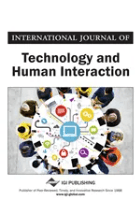
International Journal of Technology and Human Interaction
Redefining Human Interaction Through Technological AdvancesInternational Journal of Technology and Human Interaction, published by IGI Global, serves as a critical platform for the exploration of the intersection between technology and human behavior, offering an interdisciplinary lens on topics within the realms of Human-Computer Interaction and Information Systems. With an ISSN of 1548-3908 and an E-ISSN of 1548-3916, this journal has been contributing to scholarly discourse since its inception in 2005, with ongoing publication until 2024. Hosting a diverse range of research articles, case studies, and reviews, the journal aims to advance the understanding of how technology influences human experience and interaction patterns in various contexts. Although currently positioned in the Q4 quartile of both Human-Computer Interaction and Information Systems categories, the journal fosters knowledge that aspires to redefine scope and standards within the field. Its commitment to quality research is reflected in its Scopus rankings, showcasing its relevance despite its emerging status in academia. Targeting researchers, professionals, and students alike, the International Journal of Technology and Human Interaction invites contributions that address the pressing challenges and innovations at the nexus of technology and human interaction.

Advances in Human-Computer Interaction
Exploring the future of interaction.Advances in Human-Computer Interaction is a premier peer-reviewed journal published by HINDAWI LTD, dedicated to the exploration of cutting-edge research and innovation in the field of Human-Computer Interaction (HCI). With an ISSN of 1687-5893 and an E-ISSN of 1687-5907, this Open Access journal has been contributing to the scientific community since 2008, offering unrestricted access to critical findings and advancements. Based in Egypt with an address at ADAM HOUSE, 3RD FLR, 1 FITZROY SQ, LONDON W1T 5HF, ENGLAND, it occupies a notable position in the academic landscape, reflected in its 2023 Scopus ranking of Rank #57/145 and a 61st percentile in the Human-Computer Interaction category. As a Q3 journal, it plays a crucial role in disseminating research that bridges the gap between humans and technology, providing valuable insights for researchers, professionals, and students pursuing expertise in this dynamic field. The journal’s converged years from 2010 to 2024 signify its ongoing commitment to advancing knowledge and fostering collaboration among HCI experts worldwide.

INTERNATIONAL JOURNAL OF HUMAN-COMPUTER STUDIES
Pioneering Insights for a Tech-Driven FutureINTERNATIONAL JOURNAL OF HUMAN-COMPUTER STUDIES, published by Academic Press Ltd - Elsevier Science Ltd, stands at the forefront of research dedicated to the dynamic interplay between humans and technology. With a remarkable impact factor reflective of its rigorous academic standards and its prestigious ranking in the Q1 category across vital disciplines such as Education, Engineering, Human Factors and Ergonomics, and Human-Computer Interaction, this journal serves as an essential resource for researchers, professionals, and students alike. Spanning from 1994 to 2024, it showcases pioneering studies that contribute significantly to the understanding of cognitive processes, usability, and the evolving role of technology in society. Despite the absence of Open Access options, access to this journal is facilitated through institutional subscriptions, ensuring that critical findings and advancements are readily available to a global audience. By continuing to publish high-quality research, the INTERNATIONAL JOURNAL OF HUMAN-COMPUTER STUDIES plays a crucial role in advancing the field, fostering innovation, and guiding future research directions.